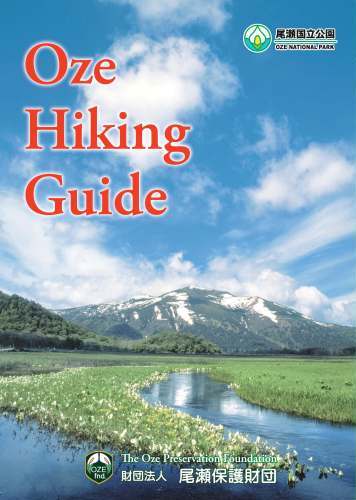Oze National Park
Oze Hiking Guide
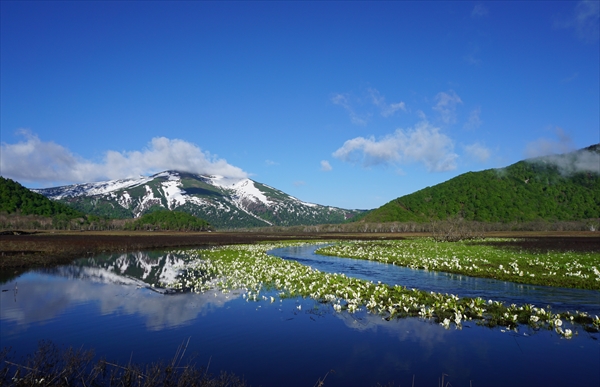
Welcome to Oze National Park
Oze is home to many beautiful flowers, including skunk cabbages that bloom in wetlands during the thawing season and daylilies that show their vivid yellow petals as the surrounding mountains turn green. The area’s rich floral environment is a result of interaction among its mountains, lakes, rivers, forests and local organisms. These beautiful surroundings, which attracted environmentalist Chozo Hirano to live in the region approximately 100 years ago, remain unspoiled even today, and now stand as a symbol of nature conservation in Japan.
In Oze, the seasonally changing landscapes and the environment surrounding them are truly captivating.
Introduction to Oze National Park
Spanning the four prefectures of Gunma, Fukushima, Niigata and Tochigi, Oze National Park consists of three parts: the Oze area, encompassing the vast Ozegahara wetland, Ozenuma Lake and famous mountains such as Mt. Shibutsusan and Mt. Hiuchigadake; the Mt. Aizu-Komagatake area, where Primula cuneifolia Ledeb. var. hakusanensis Makino blooms in wetlands near the summit; and the area containing Mt. Tashiroyama (famous for its summit wetlands) and Mt. Taishakusan (where Pteridophyllum racemosum grows in clusters).
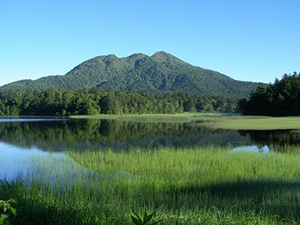
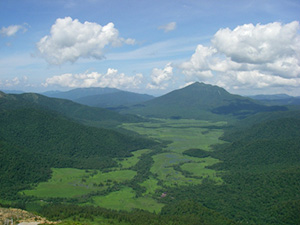
Oze area(Lake Ozenuma) Oze area(Ozegahara Marsh)
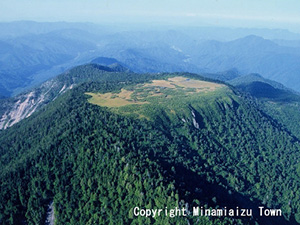
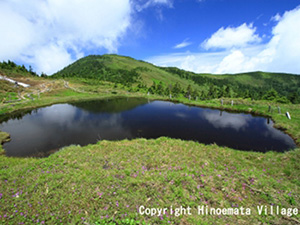
Mt.Tashiro and Mt.Taishaku Mt.Aizu-Komagatake area
Oze’s open season
Oze is normally open to the public between mid-May and late October.
Spring (mid-May to June)

Skunk cabbages start to bloom when the remaining snow disappears from the wetlands. Some say they look like white fairies on the withered wetland terrain. The scene of the skunk cabbages in Ozegahara against the backdrop of the snow-capped Mt. Shibutsusan is arguably among the finest landscapes in Japan. Many other flowers, including yellow Marsh marigolds, also bloom in Oze at this time of year.
*Some areas may have lingering snow during this season.
Summer (July to early August)

This is when the area’s flowers thrive the most. Beautiful daylilies – a symbol of Oze in summer – are found in clusters in Ozegahara and the Oe Wetland near Ozenuma. Alpine flowers also start to bloom, including Japonolirion osense on Mt. Shibutsusan and Primula cuneifolia Ledeb. var. hakusanensis Makino on Mt. Aizu-Komagatate.
Late summer to autumn (mid-August to October)

Following the floral summer season, autumn flowers, such as Gentiana triflora var. japonica, come into bloom, and the season of kusamomiji (wetland grass turning yellow) also arrives. The leaves on the trees in the surrounding mountains also start to change color, and the first snow may fall around this time. In October, mountain lodges close, heralding the onset of Oze’s long, harsh winter.
Respecting Oze
1. Do not step onto wetlands.

To protect the wetlands, please do not step off boardwalks onto, place tripods on or sit on boardwalks or at rest stops with your feet on the wetlands below.
2. Do not remove animals or plants.

To protect local ecosystems and preserve the natural landscape of Oze, animal capture and plant harvesting are prohibited by law. Please do not use fallen branches as walking sticks or collect fallen leaves.
3. Take garbage home with you.

Discarding and abandoning garbage are prohibited in Oze. Please take garbage home; there are no disposal points in Oze.
4. Do not bring pets.
Domesticated animals may pose a threat or transmit diseases to wild animals living in Oze, and may disturb other visitors.
5.Prevent intrusion by alien species.

To keep alien plant species from entering Oze, please clean shoes of any mud that may contain plant seeds using the mats provided at mountain access points.
6. Do not stray from boardwalks or mountain trails.
Please do not step off boardwalks onto wetland areas or stray from trails into vegetation. Keep to the right on boardwalks and trails; people ascending have the right of way. Smoking is prohibited.
7. Use public bathrooms appropriately.
Please use the toilet paper provided and keep bathroom facilities clean for subsequent users. Maintenance of mountain bathrooms requires a lot of work. Donation boxes are installed at bathroom entrances to help cover some of the maintenance costs (Japanese currency only).
8. Observe designated camping areas.
Do not camp outside designated camping sites.
9. Do not light campfires.

Portable cooking stoves may be used in safe places where no disturbance will be caused to others.
10. Do not throw coins.
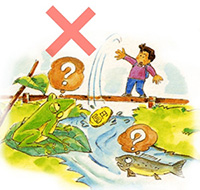
Throwing coins into ponds and rivers only harms Oze’s natural environment. Instead, please donate the money via the donation boxes provided.
11. Bring portable toilet facilities with you.
There are no bathrooms on Mt. Shibutsusan and Mt. Hiuchigadake. Please bring portable toilet facilities (available at trail head shops and other places) when climbing these mountains.
12. Use pole caps.
Bare poles damage boardwalks and trails. Please use pole caps.
◎Oze National Park contains Special Protection Zones and Special Zones, and its ecosystems and landscapes are subject to strict preservation rules. Oze is also designated as a Special Natural Monument because of its academic value, and requires high-level preservation as an important cultural asset. The area is also listed as a registered wetland under the Ramsar Convention, and its precious migratory-bird habitats are internationally protected.
Access
Train
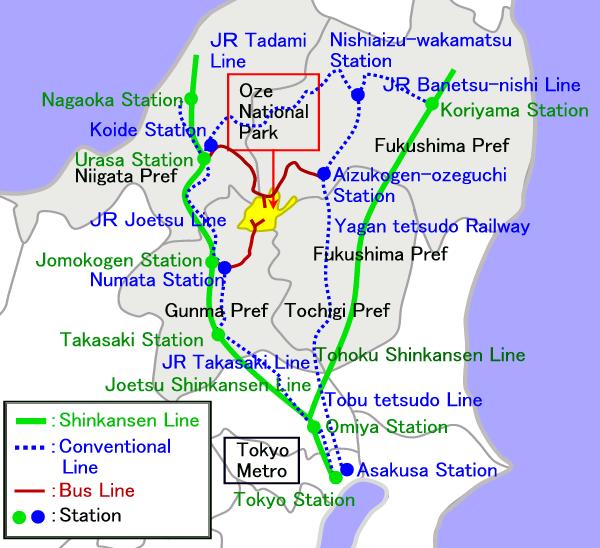
From Gunma Prefecture
(Train and bus)
【Hatomachi Toge path】
Get off at Jomokogen Station on the Joetsu Shinkansen Line or Numata Station on the JR Joetsu Line. Take the Kanetsu Kotsu bus for Tokura or Oshimizu and get off at Tokura (the bus center for the Hatomachi Toge path), transfer to the bus for the Hatomachi Toge path and get off at the last stop.
【Oshimizu】
Get off at Jomokogen Station on the Joetsu Shinkansen Line or Numata Station on the JR Joetsu Line. From there, take the Kanetsu Kotsu bus for Oshimizu and get off at the last stop.
From Fukushima and Niigata
(Train and bus)
【Miike and Numayama Toge path】
・From Aizu Kogen Ozeguchi Station on the Yagan Tetsudo railway, take the Aizu Bus for the Numayama Toge path and get off at Miike.
・ From Urasa Station on the Joetsu Shinkansen line, take the Minami Echigo Kanko Bus for Okutadami and get off at the last stop. From there, take the Okutadami Kankosen sightseeing ship, get off at Ozeguchi, take the Aizu Bus for the Numayama Toge path and get off at Miike (to go to Shibosawa Onsen, get off at Kozodaira).
*To go to Ozenuma Pond, take the shuttle bus from Miike to the Numayama Toge path.
Car route map
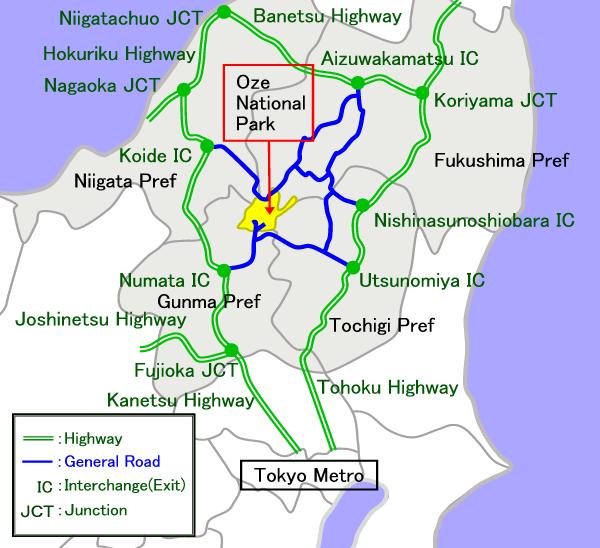
From Gunma Prefecture
(Car)
【Hatomachi Toge path】
Exit the Kanetsu Highway at Numata IC and take National Roads 120 and 401 to Tokura. From there, take Prefectural Road 260 and the subsequent roads to the Hatomachi Toge path. On days when traffic is regulated, park at Oze No. 1, Oze No. 2 or Snow Park Oze Tokura parking lots and take a bus or taxi to the path.
【Oshimizu】
Exit the Kanetsu Highway at Numata IC and take National Roads 120 and 401 to Oshimizu.
From Fukushima and Niigata
(Car)
【Miike and Numayama Toge path】
・Exit the Kanetsu Highway at Nasunoshiobara IC and take National Roads 400, 121 and 352 to Miike.
・From Koide IC on the Kanetsu Highway, take National Road 352 to Miike.
*To go to Ozenuma Pond, take the shuttle bus from Miike to the Numayama Toge path.
◎To climb Mt. Aizu-Komagatake, use the Takizawa trailhead or the Kirinte access point in Hinoematamura Village.
◎To climb Mt. Tashiroyama or Mt. Taishakusan, use the Sarukura access point in Minamiaizucho Town or the Umasaka Toge path access point in Hinoematamura Village.
*Traffic to the Hatomachi Toge path and Numayama Toge path may be regulated. Please see the Oze Preservation Foundation website for details.
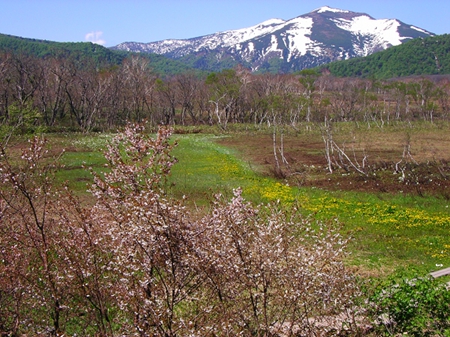
Leaving Oze’s irreplaceable natural environment for future generations
Oze’s beautiful seasonally changing appearance attracts large numbers of visitors, and too many people entering the area at the same time or from the same access point may damage its natural environment. Oze’s ecosystems, which have developed around its wetlands, are very fragile and easily damaged by people.
To preserve these precious natural surroundings for our children, it is important for each of us to observe the rules while enjoying the area, including not stepping onto the wetlands. Visitors are also encouraged to come on weekdays when there are fewer people.
Oze is a high-altitude alpine area, and accidents can occur. Visitors should study the area and make necessary preparations in advance.
Oze Hiking Guide
